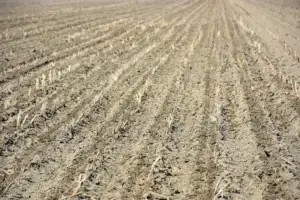No products in the cart.

No Till Farming: Sustainable Agriculture Practice Explained
No Till Farming: The Sustainable Future of Agriculture
Introduction
In recent years, no till farming has emerged as a revolutionary practice in agriculture. But what exactly is no till farming, and why is it gaining popularity? This article delves into the concept, benefits, and implications of no till farming, while exploring its role in sustainable agriculture and its impact on the environment.

Table of Contents
| Sr# | Headings |
|---|---|
| 1. | What is No Till Farming? |
| 2. | Evolution and History |
| 3. | Benefits of No Till Farming |
| 4. | Environmental Impact |
| 5. | Challenges and Considerations |
| 6. | How No Till Farming Works |
| 7. | Equipment Needed |
| 8. | Comparing No Till to Conventional Farming |
| 9. | Economics of No Till Farming |
| 10. | Success Stories |
| 11. | Future Trends and Innovations |
| 12. | Conclusion |
| 13. | FAQs |
What is No Till Farming?
No till farming refers to a method of planting crops without disturbing the soil through tillage. Unlike traditional methods that involve plowing to prepare the soil for planting, no till farming leaves the soil structure intact, retaining organic matter and its natural fertility.
Evolution and History
Farming practices have evolved significantly over the years. From ancient plows to modern machinery, each stage has brought new methods. No till farming is the latest step, born from a need to preserve soil health and reduce environmental impact.
Benefits of No Till Farming
Conservation of Soil Health
One of the primary benefits of no till farming is its ability to conserve soil health. By leaving the soil undisturbed, it promotes better water retention and reduces erosion, crucial for sustainable agriculture.
Increased Organic Matter
No till farming enhances organic matter content in the soil. This organic matter improves soil structure and provides nutrients to crops, reducing the need for synthetic fertilizers.
Time and Cost Savings
Farmers practicing no till methods save time and money by reducing the number of passes needed in the field. This can lead to increased efficiency and profitability.
Environmental Impact
Reduced Erosion and Water Conservation
No till farming significantly reduces soil erosion, which helps protect water quality and reduces sedimentation in rivers and lakes. It also conserves water by enhancing soil structure and reducing runoff.
Decreased Greenhouse Gas Emissions
Compared to conventional farming, no till methods contribute to lower greenhouse gas emissions. Less soil disturbance means less carbon dioxide released into the atmosphere.
Challenges and Considerations
Weed Management: No till farming requires effective weed management strategies, as soil disturbance isn’t used to control weed growth.
Adaptation Period: Farmers transitioning to no till methods may face initial challenges as the soil adjusts to new practices.
How No Till Farming Works
No till farming relies on specialized equipment to plant seeds directly into untilled soil. This equipment cuts through residue and creates a seedbed, ensuring crops receive necessary nutrients while maintaining soil structure.
Equipment Needed
Planters and Drills
Specialized planters and drills are essential for no till farming. They are designed to handle residues and plant seeds at precise depths.
Sprayers and Herbicides
Effective weed management requires the use of sprayers and herbicides. These tools help control weeds without disturbing the soil.
Comparing No Till to Conventional Farming
Soil Health: No till -farming improves soil health by maintaining its natural structure, while conventional farming may lead to soil degradation.
Cost: Conventional farming can be more expensive due to higher fuel and labor costs associated with tillage.
Economics of No Till -Farming
No till -farming can be economically beneficial due to reduced fuel costs, labor savings, and potentially higher yields over time.
Success Stories
Case Study: XYZ Farm
XYZ Farm implemented no till- farming and saw a 20% increase in yield over three years, along with reduced operating costs.
Future Trends and Innovations
Precision Agriculture
Advancements in precision agriculture technologies are enhancing the efficiency and sustainability of no till- farming.
Cover Crops
Integrating cover crops into no till rotations is becoming a popular practice to further improve soil health and fertility.
Conclusion
No till- farming is not just a method; it’s a commitment to sustainable agriculture and environmental stewardship. By preserving soil health, reducing erosion, and conserving resources, no till- farming offers a promising future for feeding the world while protecting our planet.
FAQs
Is no till- farming better for the environment?
Yes, no till -farming helps reduce soil erosion, conserve water, and decrease greenhouse gas emissions.
What are the challenges of no till- farming?
Managing weeds and the initial adaptation period are common challenges farmers face with no till -farming.
How does no till- farming affect soil health?
No till -farming improves soil health by preserving its structure and increasing organic matter.
Can no till -farming increase crop yields?
Yes, over time, no till -farming can lead to higher crop yields due to improved soil fertility and structure.
What equipment is needed for no till -farming?
Farmers need specialized planters, drills, and herbicides to effectively practice no- till farming.
Go and turn on towards organic farming to save future and thire save childs:
Elevate Plant Growth with Premium Bone Powder – Buy Now!
Organic Cow Dung Compost: Transform Your Garden Naturally
Premium Humic Acid for Healthy Plants | Enhance Soil & Boost Growth
Boost Plant Growth Naturally with Mustard Cake | Organic Fertilizer
Transform Your Garden with NPK Fertilizer | Boost Growth by 30%
Premium Perlite for Enhanced Gardening | Buy Now
Live Earthworms with Enhance Your Garden (soil health)
1 Neem Khali: Unveiling the Wonders of Nature
1Transform your garden with vermiwash-buy now
1 Premium quality Vermicompost [ केचुआ खाद ]
Follow us:
Tagged Inno till farming

